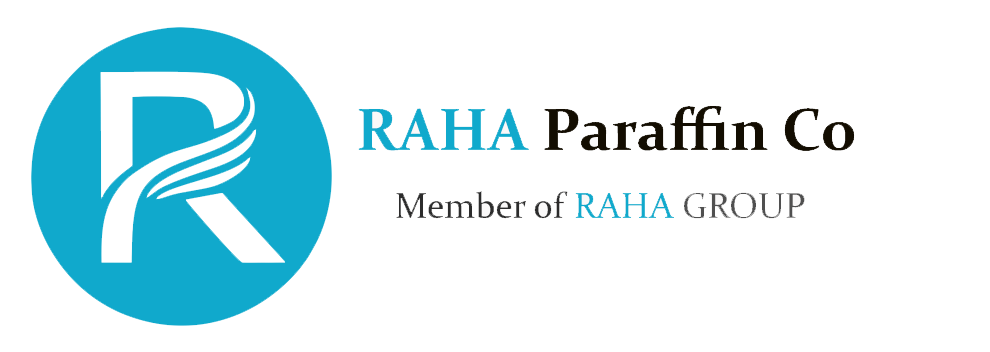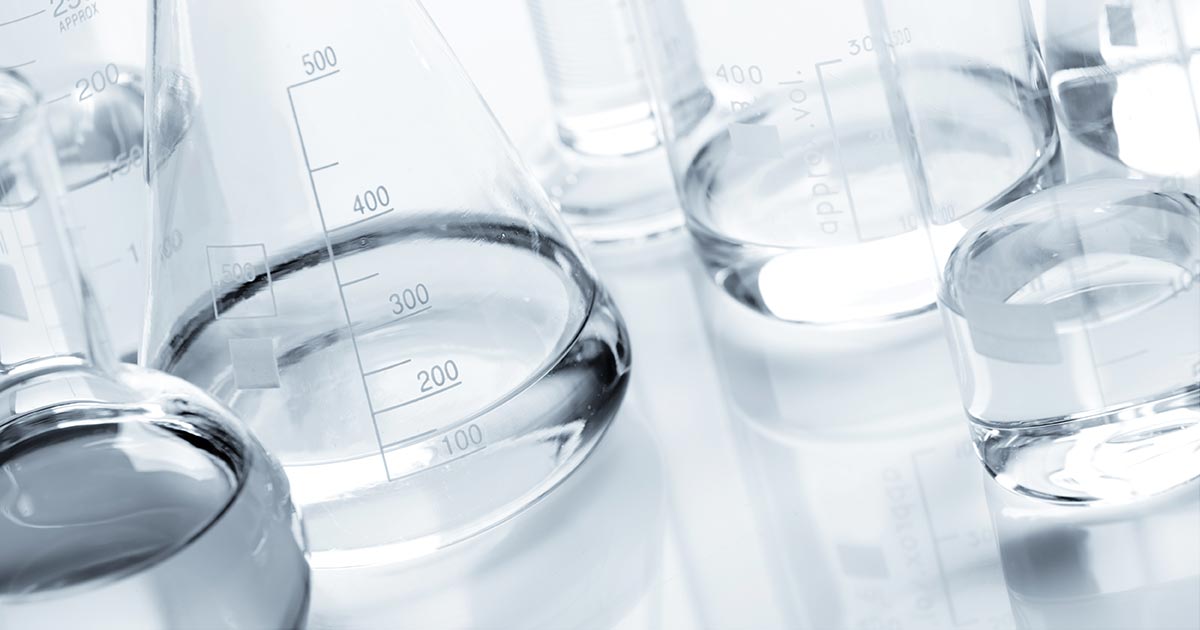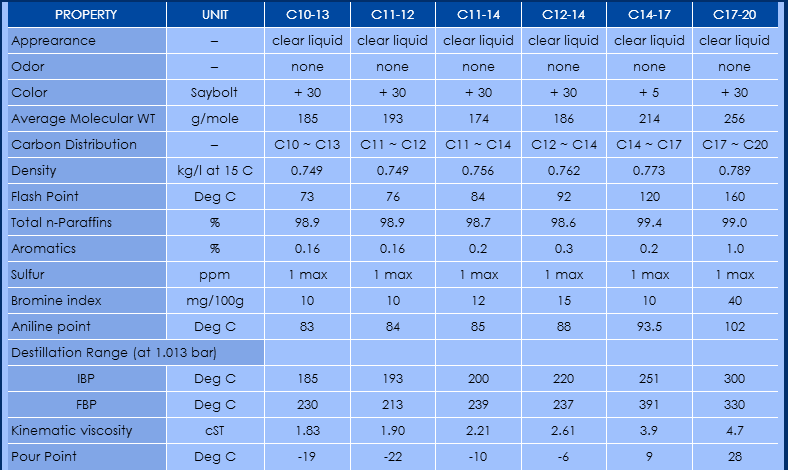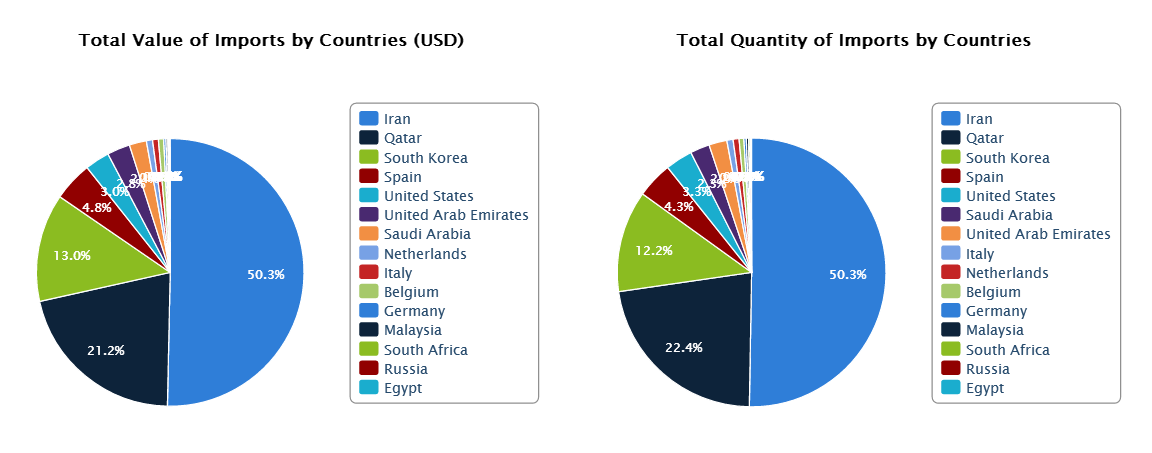
Normal Paraffin or N-Paraffin

Determination of Normal Paraffin
Normal Paraffin is a clear liquid that are made up of saturated hydrocarbons with a straight-chain structure. They are either extracted from kerosene or through the “Fischer-Tropsch process” at gas-to-liquid production sites. Paraffin (or called kerosene) is a mixture of hydrocarbons; it usually consists of about 10 different hydrocarbons, each containing from 10 to 16 carbon atoms per molecule; the constituents include n-dodecane, alkyl benzene, and naphthalene and its derivatives. Kerosene is obtained from crude oil by distillation and is used as a fuel for heating and aircraft. N-paraffin C10-C13 is a colorless liquid with a mild odor. It is insoluble in water. It is slow-evaporating, environmentally adapted (fully bio-degradable) with negligible sooting (like lamp oil).
Normal Paraffin is the major raw material for the manufacture of the LAB. Normal Paraffin is extracted from kerosene which contains an average of 20/25% paraffin and therefore is generally produced close to a refinery as the kerosene, free of the paraffin removed has to be returned to the refinery. Over 80% of Normal Paraffin is used for the production of the LAB the remaining N-Paraffin may be further processed to obtain special solvents used for various industrial applications including synthetic resins, paints and varnishes, degreasing agents and printing inks. Normal paraffin operates as a dissolver in industrial for producing polymers and resins, colors, artistic coverings and grease polisher.
N-Paraffin and ISO Paraffin
Paraffins can be arranged either in straight chains (normal paraffin) or branched chains (isoparaffins). Most of the paraffin compounds in naturally occurring crude oils are normal paraffin, while isoparaffins are frequently produced in refinery processes. The normal paraffin are uniquely poor as motor fuels, while isoparaffins have good engine-combustion characteristics. Longer-chain paraffin are major constituents of waxes. Normal paraffin are produced from select kerosene and/or gasoil, feedstocks using molecular sieves extraction. After appropriate purification treatment of desulfurization, dearomatization, the n-paraffin stream is passed into the fractionation unit, then the desired carbon cuts are obtained. Normal paraffins are used as a solvent; a basic material in the manufacture of surfactants; in the manufacture of metalworking compounds, lube oil components, plasticizers and chloroparaffins; production of oils for aluminum cold rolling; catalyst carrier for olefin polimerization; raw materials for a wide range of applications.
Applications of Normal Paraffin
N-Paraffin is mainly used in the production of Linear Alkylbenzene (LAB) as well as in the manufacture of chlorinated paraffin wax, plasticizers, lamp oils, BBQ lighters, barbeque starters, sealant, adhesives, manufacture of alcohol derivatives, cutting oils, lubricants and metalworking products.
Physical and Chemical Properties
Normal Paraffin Price, Volume and Value
International statistics show that Iran is the largest exporter of normal paraffin to India by 2016. RAHA Paraffin Co is also one of the pioneer exporters in the petroleum products, especially normal paraffin. Our customers all over the world are satisfied with the perfect and reliable service of our company. Below is provided an analysis of the volume of imports and price of normal paraffin in India.
Specification of N-Paraffin C/10-C/13
| PROPERTY | TEST METHOD | SPECIFICATION | TYPICAL VALUE |
| DENSITY at 15.6°C gr/cm³ | ASTM-4052-96 | 0.7490-0.7530 | 0.7506 |
| SAYBOLT COLOR | ASTM-156-00 | +29min | >+30 |
| BROMINE-INDEX, mg BR/100gr OF SAMPLE |
ASTM D-1492-87 | 20max | 7 |
| CARBON DISTRIBUTION, WT% NORMALIZED≤C9 C10-C13, C14 |
UOP915-92 | 0.2max
99min 0.7max |
—
99.65 0.35 |
| AVERAGE MOLECULAR WEIGHT | UOP915-92 | 163-169 | 166.3 |
| MOISTURE, PPM | UOP481-91 | 100max | 15 |
| TOTAL NORMAL PARAFFIN WT% | UOP915-92 | 98min | 99.11 |
| SULFUR, PPM | UOP727-72 | 2max | <1 |
| CHLORIDE, PPM | UOP395-90 | 1max | 0.1 |
| AROMATICS, WT% | UOP495-00 | 0.5max | 0.4 |
| PEROXIDE NUMBER | ASTM E-299-97 | 2max | 0.1 |
| NITROGEN, PPM | ASTM D-6366-99 | 1max | <0.5 |




